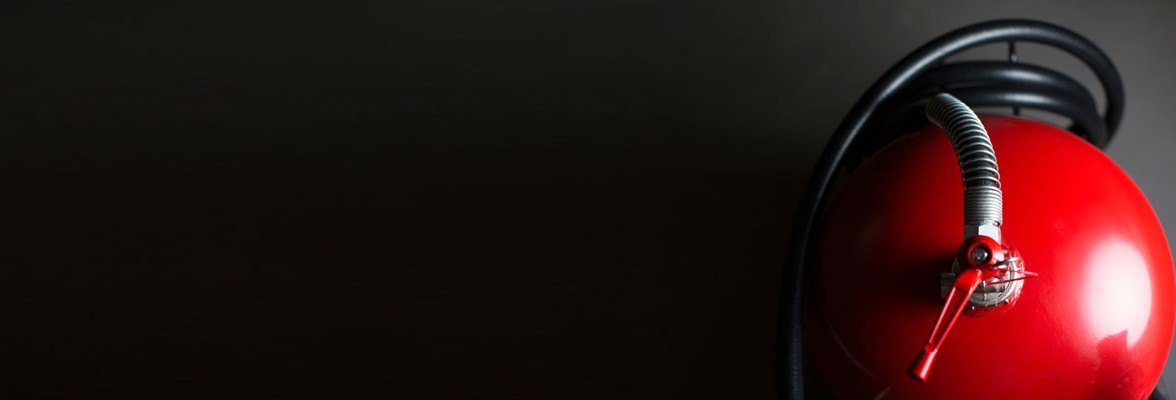YOUR CART
- No products in the cart.
Subtotal:
$0.00
BEST SELLING PRODUCTS


The latest report from the National Fire Protection Association (NFPA) reveals that there were approximately 1.5 million fires throughout the United States, and property damage associated with these fires amassed $18 billion.
Equipping your business premises with fire safety equipment is an essential step in preventing fire destruction. However, you need to inspect your components to ensure optimal functionality. Our guide will delve into the frequency of inspections and explore some fire system maintenance tips for increased safety in your workplace.
Whether you choose to conduct fire protection inspections yourself or enlist the help of a professional service, businesses need to prioritize this task. Here are three reasons why regular inspections are necessary:
Fire safety inspections are required at different intervals depending on the industry and equipment. Businesses are required to equip their buildings with various equipment for enhanced fire safety. Some of these elements require a weekly inspection, while others only need a quarterly check. Here’s an overview of some of the most essential fire safety equipment and its related inspection schedules.

Fire extinguishers are instrumental in putting out small fires or keeping the flames at bay until firefighters arrive. There are five types of extinguishers — each containing a different substance such as water, chemicals or gas. Businesses will need to select the type that applies to their fire hazards. For example, a manufacturing company will require extinguishers suited to combustible metals, whereas commercial kitchens will need extinguishers oriented to flammable liquids.
Business owners should consult the manufacturing guidelines to determine how often they need to conduct fire extinguisher inspections. However, a good rule of thumb is to perform a monthly visual inspection. During the inspection, look out for signs of rust, dents or tampering that may impact its functionality.
Fire extinguishers also require an annual service by a qualified professional. The Occupational Safety and Health Administration (OSHA) requires business owners to record the date and retain records of these checks.
Fire sprinklers are activated when a building’s ambient air exceeds 65 degrees Fahrenheit. The sprinkler system then releases water jets, helping extinguish the flames. Optimal fire sprinkler system functionality relies on frequent inspections along the following timeframes:
While these inspections suffice for most sprinkler systems, you should conduct them more frequently in cooler climates. Low temperatures can cause the pipes to freeze and malfunction.
Suppression systems perform a similar role to fire sprinklers in that they help detect fires and extinguish them. However, unlike sprinklers that use water to extinguish flames, suppression systems use gases and chemicals. For this reason, suppression systems are an effective choice for business environments that may experience electrical or oil-based fires.
Businesses should schedule a fire suppression inspection annually. A qualified professional will need to perform a variety of tests to determine product flow, alarm functionality and fire pump operation.
Fire alarms comprise intuitive sensors that assist in early fire detection. The alarm prompts occupants to take action by either evacuating the building or attempting to extinguish the fire.
Businesses need to consult the manufacturer’s handbook to determine the precise maintenance schedule for their fire alarms. However, most alarm systems require an annual inspection with a professional fire safety company to remain compliant. During the investigation, technicians will assess:
While malfunctioning emergency lights and exit signs are often easy to spot, you should still include them in your inspection schedule. As fires often affect electrical circuits and lighting, you will need to use emergency lights and signage to navigate your way out of the burning building.
In your monthly inspection, check the lighting solutions are charging effectively and maintaining their battery capacity. A qualified professional will need to oversee your annual inspection and will usually inspect the fire alarms at the same time.
Monthly or annual equipment inspections are crucial for the maintenance of fire equipment. However, there are some additional tips to further optimize your equipment’s operation, including:
Regular fire protection inspections help you identify malfunctioning equipment before it’s too late. In addition, following a routine maintenance schedule allows you to ensure equipment meets its life span specifications.
National Fire Supply takes great pride in providing businesses and homeowners with all your fire safety equipment needs. Our products carry a certification from the National Association of Fire Equipment Distributors (NAFED) to further endorse safety. If it’s time to replace faulty fire safety equipment or you require an additional component for your building safety, contact our team today. We’re more than happy to provide expert recommendations to meet your industry needs!